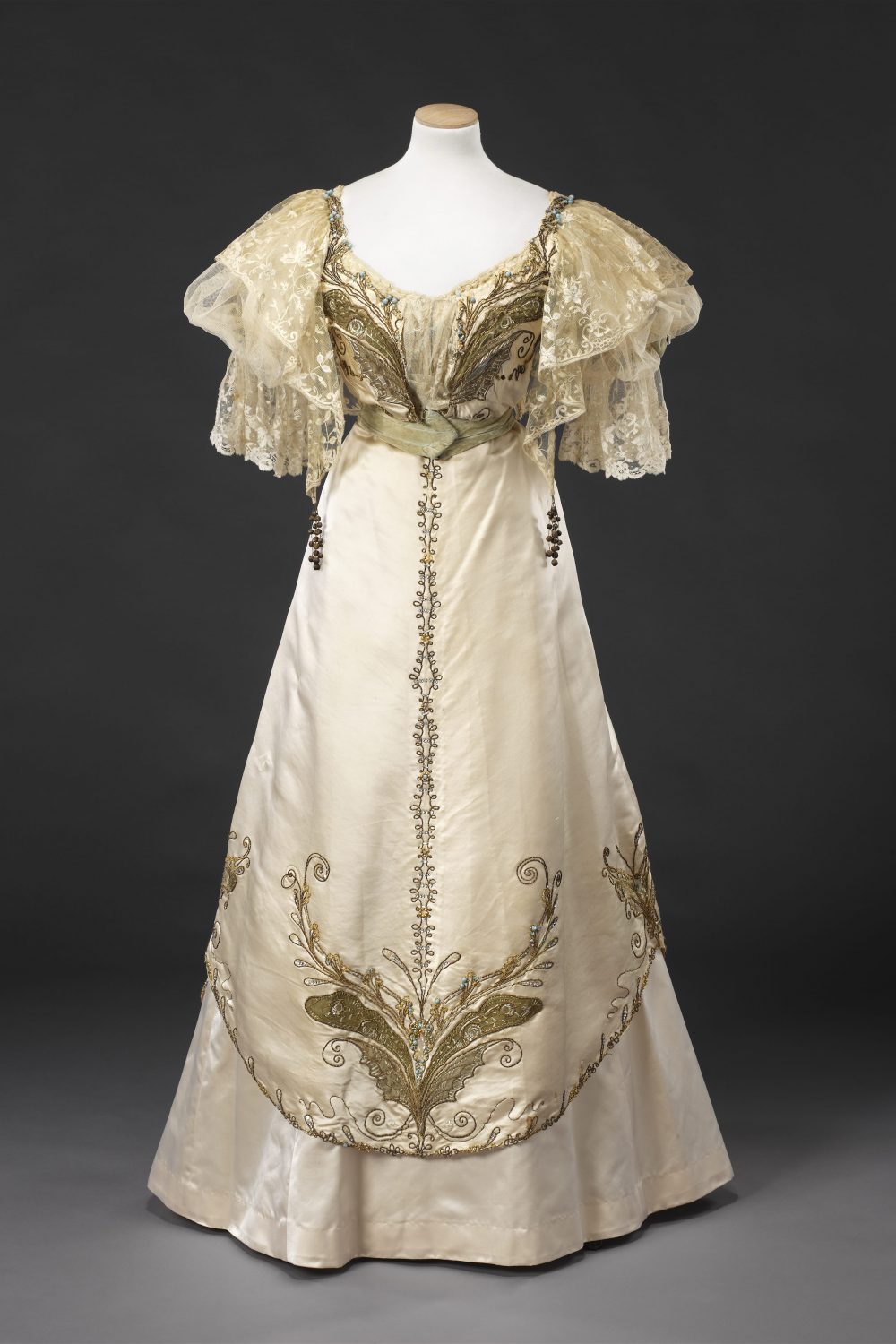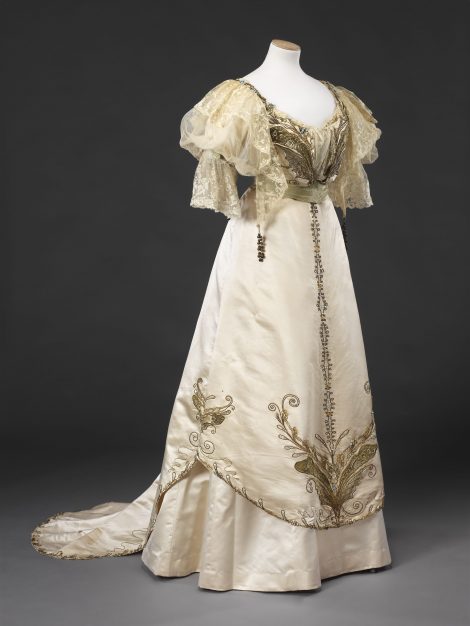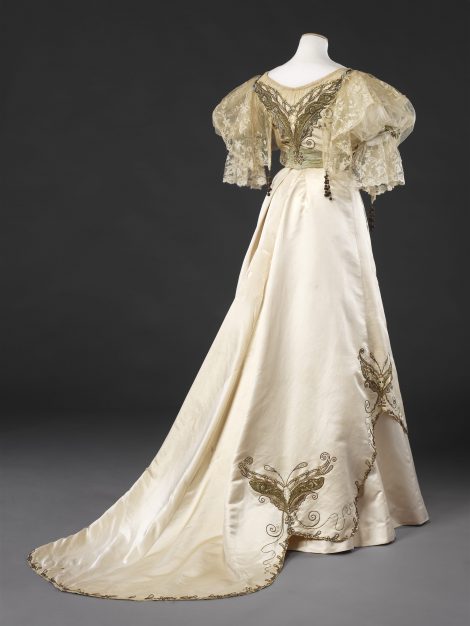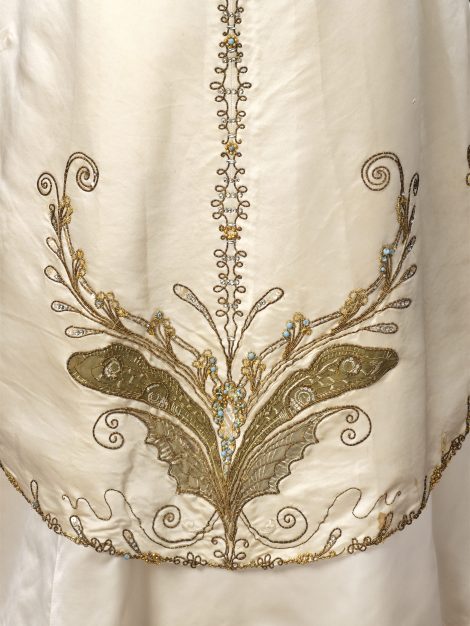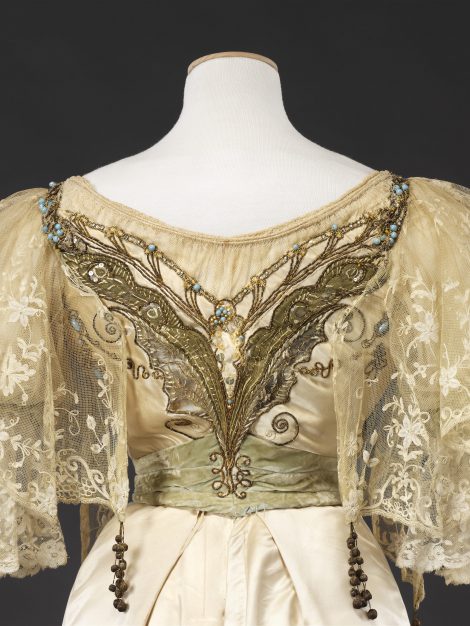Unrelated skirt.
The ornate decoration of this evening or ball gown, seen here with a replacement underskirt, is clearly influenced by the Art Nouveau movement’s predilection for the decorative qualities of the natural world, usually in a highly stylised form of sweeping lines and shapes. Butterflies and dragonflies were particularly favoured as motifs for the size, colour and delicacy of their wings, giving scope for intricate patterns and fine workmanship. These shimmering butterflies were executed in gold and turquoise coloured beads, mother of pearl sequins, metallic cord and thread, diamante, and cream floss silk on green and silver gauze. The dynamism of their lines is echoed in the neckline and the hem of the overskirt, and their filminess in the elaborate multi-layered lace and net sleeves.
Although less elaborate, the symmetrical treatment of the decoration bears a resemblance to that of an embroidered dress designed by Victor Prouvé, an influential member of the Art Nouveau École de Nancy. This dress, now in the Musée de l’École de Nancy in Lorraine (click on first image of this link: http://www.ecole-de-nancy.com/web/index.php?page=textile-prouve), was exhibited at the Societé Nationale des Beaux-Arts in Paris in 1901 alongside paintings and sculpture, its quality considered exceptional enough to raise it to the level of a work of art.
The original underskirt to the dress has suffered the fate of many contemporary garments. It was made from silk treated with metallic salts during the manufacturing process in order to give it weight and lustre for the fashionable rustling effect. These weakened the fabric causing it in time to deteriorate and shatter. A surviving part of the hem shows that it was embroidered to match that of the overskirt.
